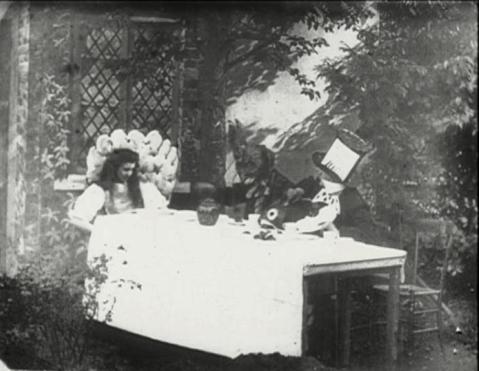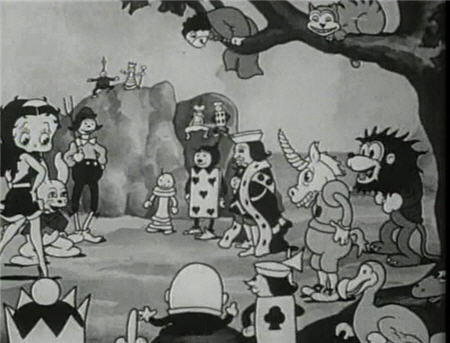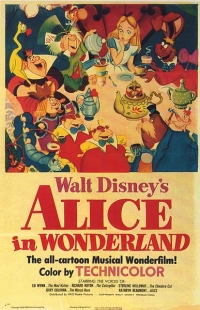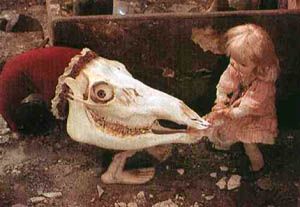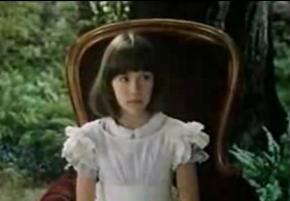Remembering Martin Gardner
 Monday, May 31, 2010 at 12:43PM
Monday, May 31, 2010 at 12:43PM I was saddened to learn of the death of Martin Gardner. He was a polymath with an infinite curiosity. Like 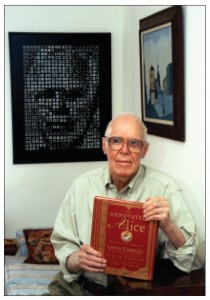 Martin Gardnermany children's literature scholars, I knew him best as the the compiler of the magnificant The Annotated Alice which was first published in 1960. His book has gone through multiple editions including The Annotated Alice: The Definitive Edition (1999).
Martin Gardnermany children's literature scholars, I knew him best as the the compiler of the magnificant The Annotated Alice which was first published in 1960. His book has gone through multiple editions including The Annotated Alice: The Definitive Edition (1999).
The Annotated Alice is a amazing compedium of all things Alice in which Gardner provides the text of the two Alice books along with citations and references to the the texts. It is essential reading for anyone interested in a better understanding of the Alice books. It has probably introduced more readers to a critical understanding of the Alice books than any other scholarly text. It is without a doubt the best starting point for any reader who wants a better and more critical understanding of the Alice books and Lewis Carroll. It the book that I encourage my students to begin their research in Alice. To re-confirm The Annotated Alice was featured in the last season of Lost. Jack read the book in two different universes.
The Annotated Alice is a true print hypertext and was easily adapted into an eletronic version as well. The popularity of The Annotated Alice inspired the publication of a number of other annotated versions of classic children's texts. But The Annotated Alice was the first and remains the best of the lot, although Michael Patrick Hearn's magnificant The Annotated Wzard of Oz, first published in 1973 and like Gardner's volume has gone through several editions is a close second. Gardner was originally planning on compiling The Annotated Wizard Oz, when he met Hearn, he gracefully stepped aside to allow the younger Hearn complete the task.
I was fortunate to be able to interview Martin Gardner for the journal, The Five Owls, through the efforts of my friend, Mark West, a children's literature scholar who teaches at the University of NC- Charlotte. Mark 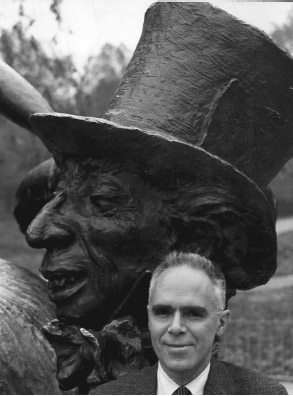 and I drove up from Charlotte to visit Gardner in his home in Henderson, NC, in the fall of 1998.
and I drove up from Charlotte to visit Gardner in his home in Henderson, NC, in the fall of 1998.
Meeting with Gardner was a amazing afternoon. I don't ofen have the opportunity to spend the day with a genius and Gardner was certainly that. Although I knew him primarily for his work on Lewis Carroll, that was just one of his many interests. It turned out he never really cared for Wonderland, preferring the fantasy of L. Frank Baum. Gardner would help put back into print with his thoughtful introductions many of Baum's novels that were published by Dover. But what attracted him to Carroll was their mutual interest in recreational mathematics. One of Gardner's earlier jobs was being the compiler of the puzzle page for the children's magazine, Humpty Dumpty.
Gardner is perhaps best known for this long running Mathematical Games Column that appeared in Scientific American. In this column and the many collections based on his column, Gardner would, as Carroll did in A Tangled Tale, Pillow Problems, and The Game of Logic provide readers with mathematical puzzles, paradoxes, and entertainments. For those readers interested in this aspect of Carroll's career, I would strongly encourage them to read Gardner's The Universe in a Handkerchief: Lewis Carroll's Mathematical Recreations, Games, Puzzles and Word Plays (1996).
Like Carroll, Gardner was a true man of letters and published some 80 books during his lifetime. He would become curious in a topic, research, and then publish a book. Douglas Hofstadter, the author of Godel, Escher, and Bach (1979), has called Gardner, "one the great intellects produced in this country in this century." Hofstadter is correct, but in addition to being brillant, Garnder was also generous and kind.
Spending the day with Gardner, was for me as "a golden afternoon," which is how Carroll described the day 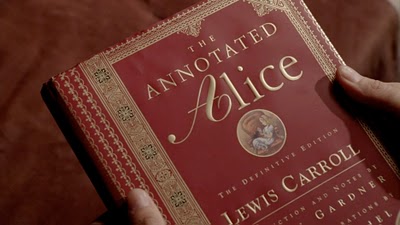 The Annotated Alice, as it appeared in the television series Lost in March 2010that he first told Alice Liddell and her sisters the oral version of Wonderland. We talked, drank tea, and he showed me his library, and his work office. When I entered his office, I was astonished. There I saw an old fashion writing desk, which allows the writer to stand while doing his composing. This is how Gardner wrote which is the same way the Carroll composed. In that moment, I realized that the reason that Gardner has such insights and understanding of Carroll is that his own life and thought process echoed that of the famous children's writer and mathematican. Both were infinitately curious and imaginative. It was the closest I have ever been to meeting Carroll.
The Annotated Alice, as it appeared in the television series Lost in March 2010that he first told Alice Liddell and her sisters the oral version of Wonderland. We talked, drank tea, and he showed me his library, and his work office. When I entered his office, I was astonished. There I saw an old fashion writing desk, which allows the writer to stand while doing his composing. This is how Gardner wrote which is the same way the Carroll composed. In that moment, I realized that the reason that Gardner has such insights and understanding of Carroll is that his own life and thought process echoed that of the famous children's writer and mathematican. Both were infinitately curious and imaginative. It was the closest I have ever been to meeting Carroll.
I wrote up the interview in the article "Conversation with Martin Gardner: The Annotator of Wonderland," published in the Jan./Feb. 2000 issue of The Five Owls.
There was a thoughtful obituary of Martin Gardner published in the May 23, 2010 issue of the The New York Times, but I thought some readers might want to read my interview with Gardner. He will be greatly missed, but his work endures.

